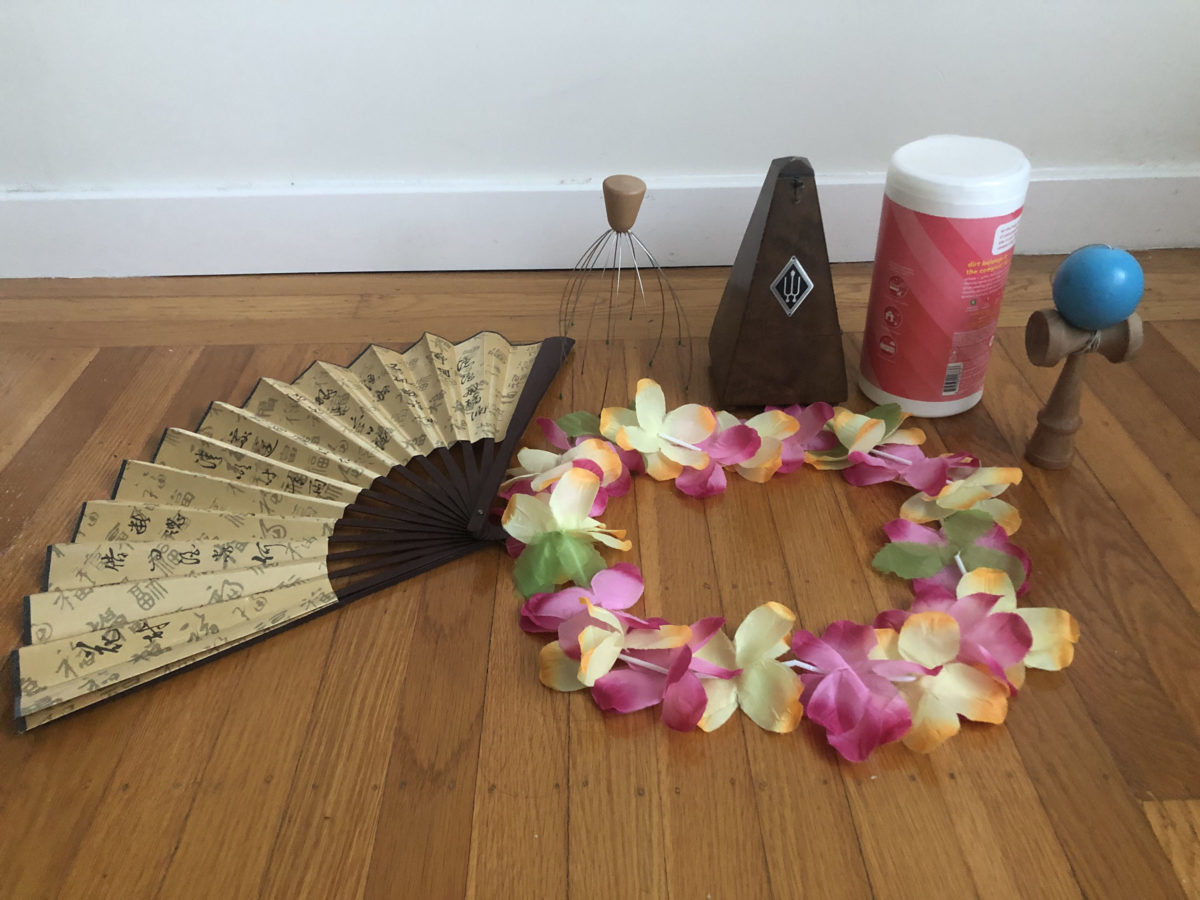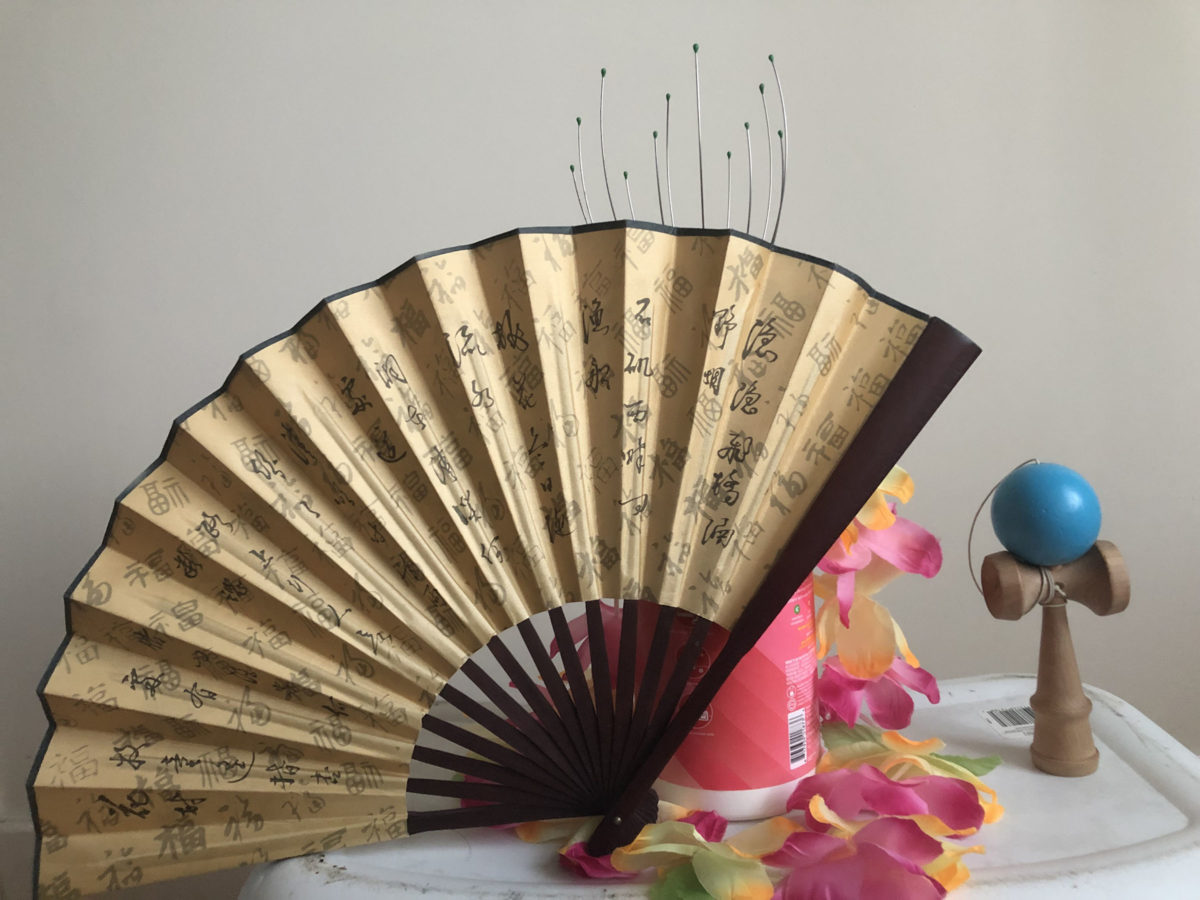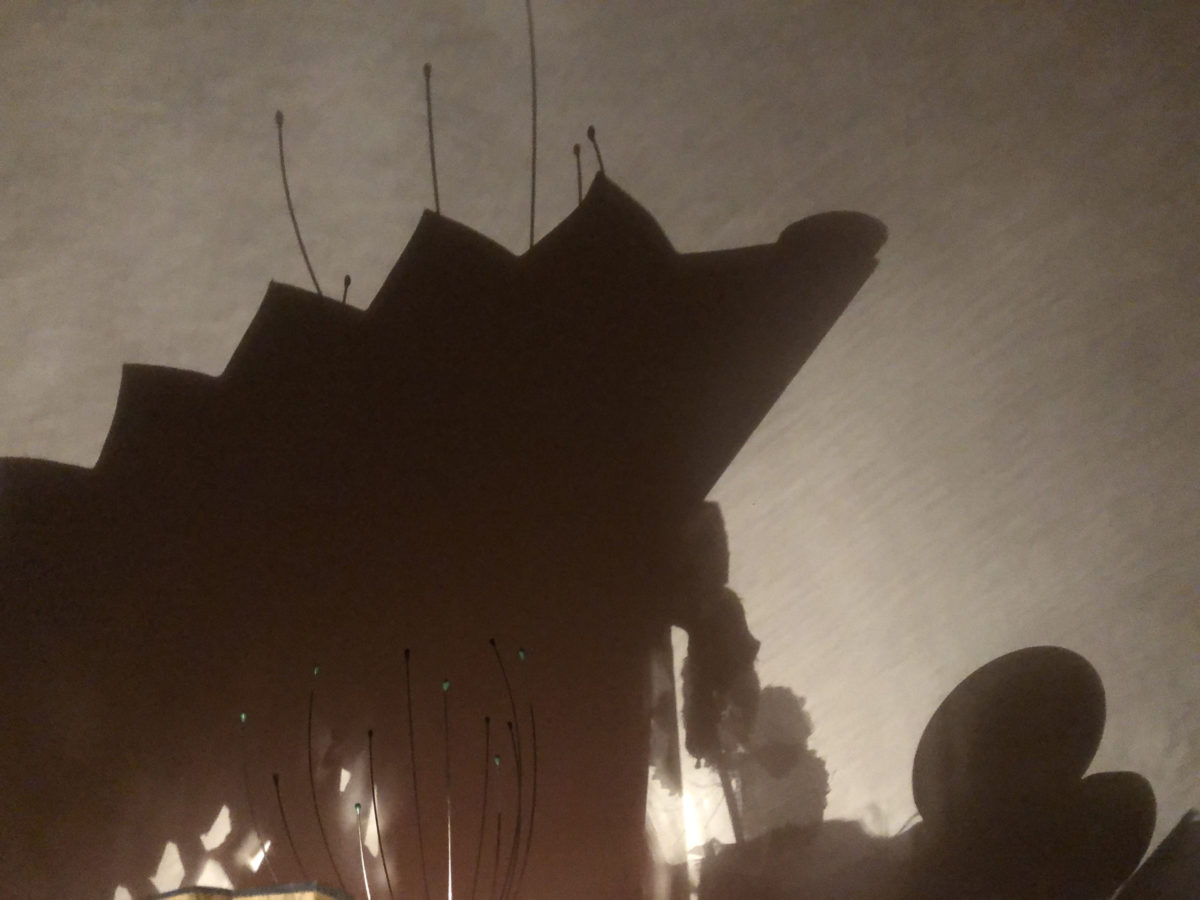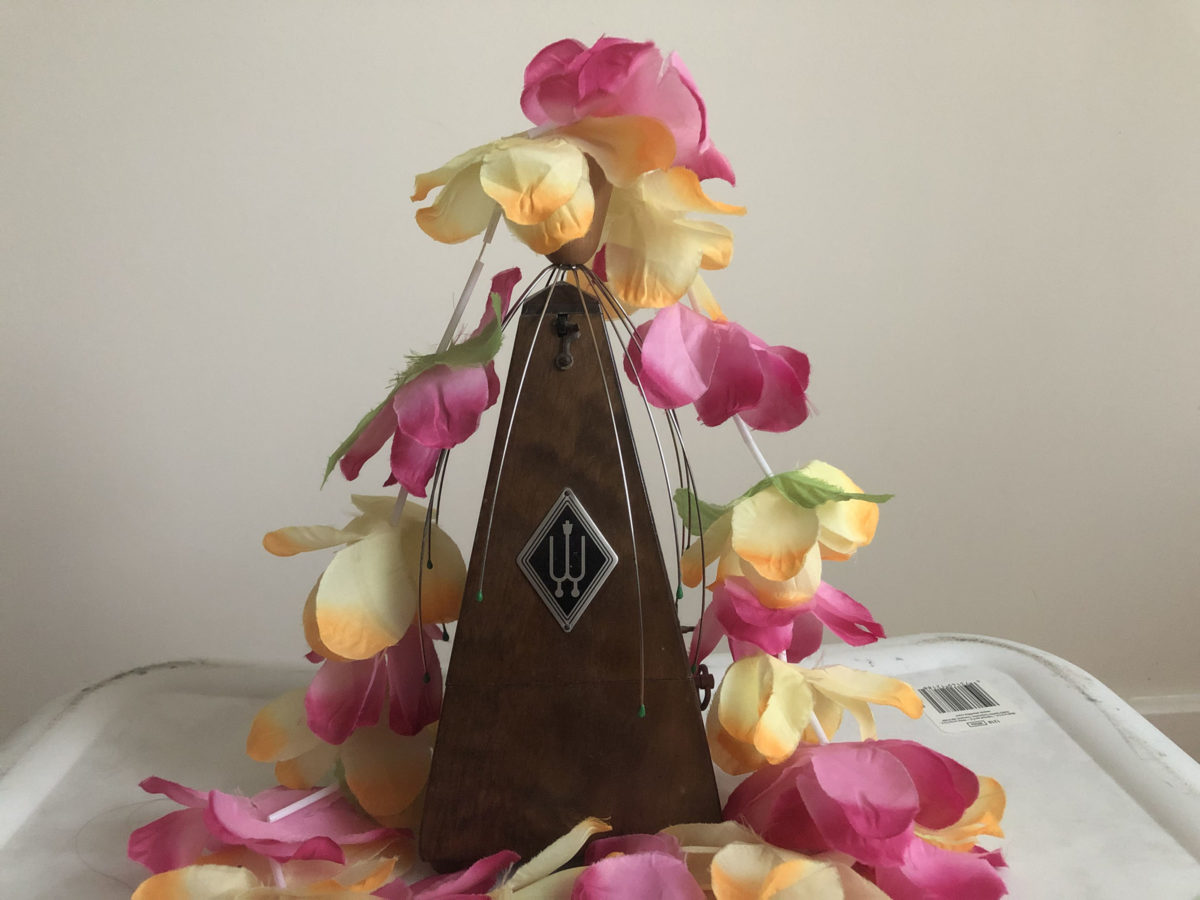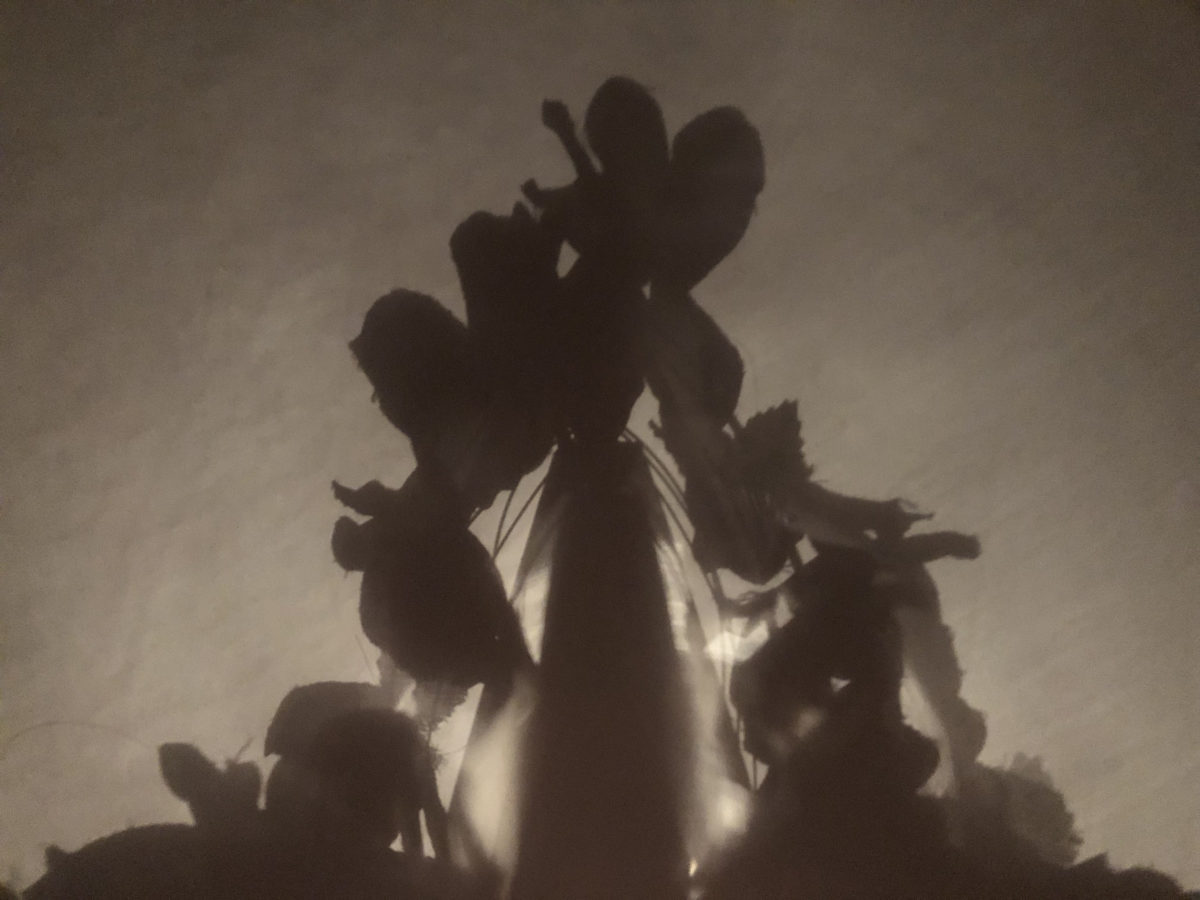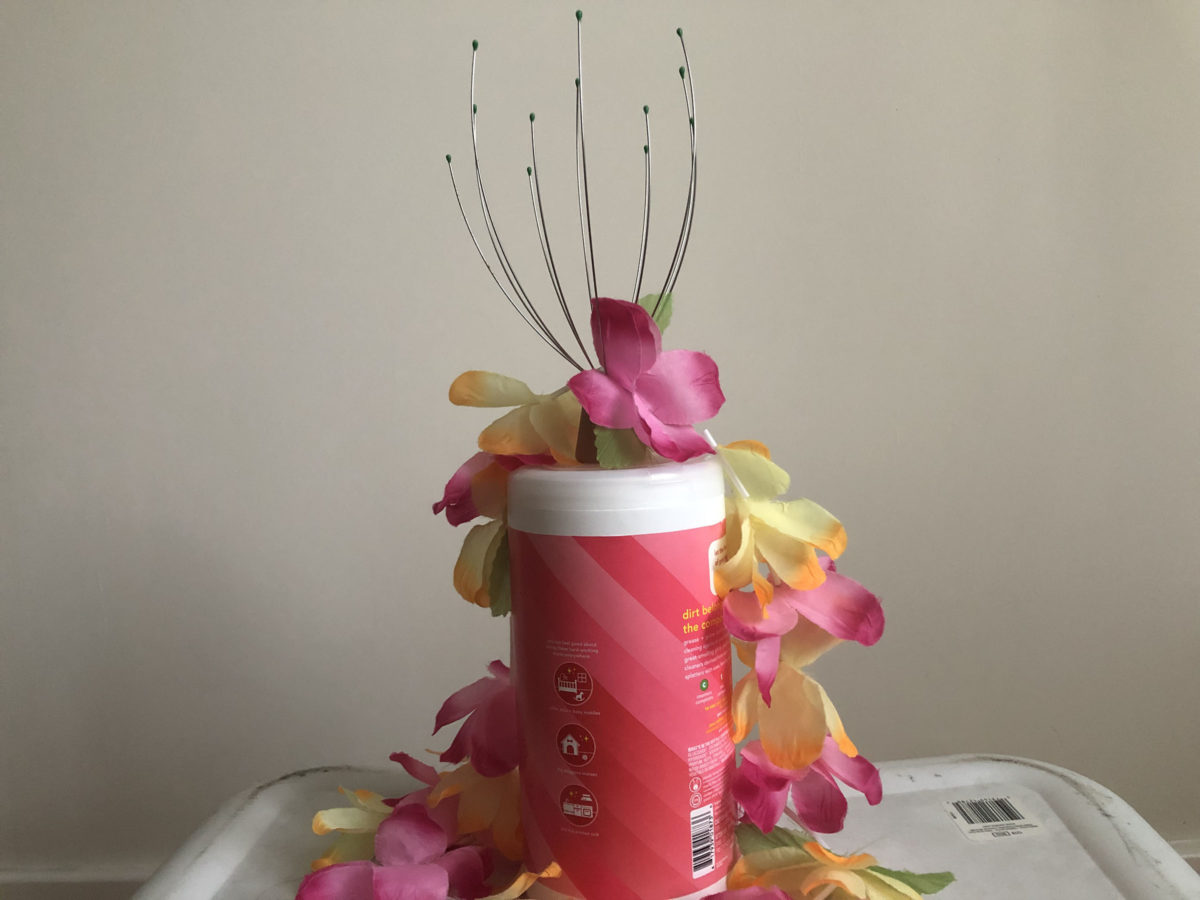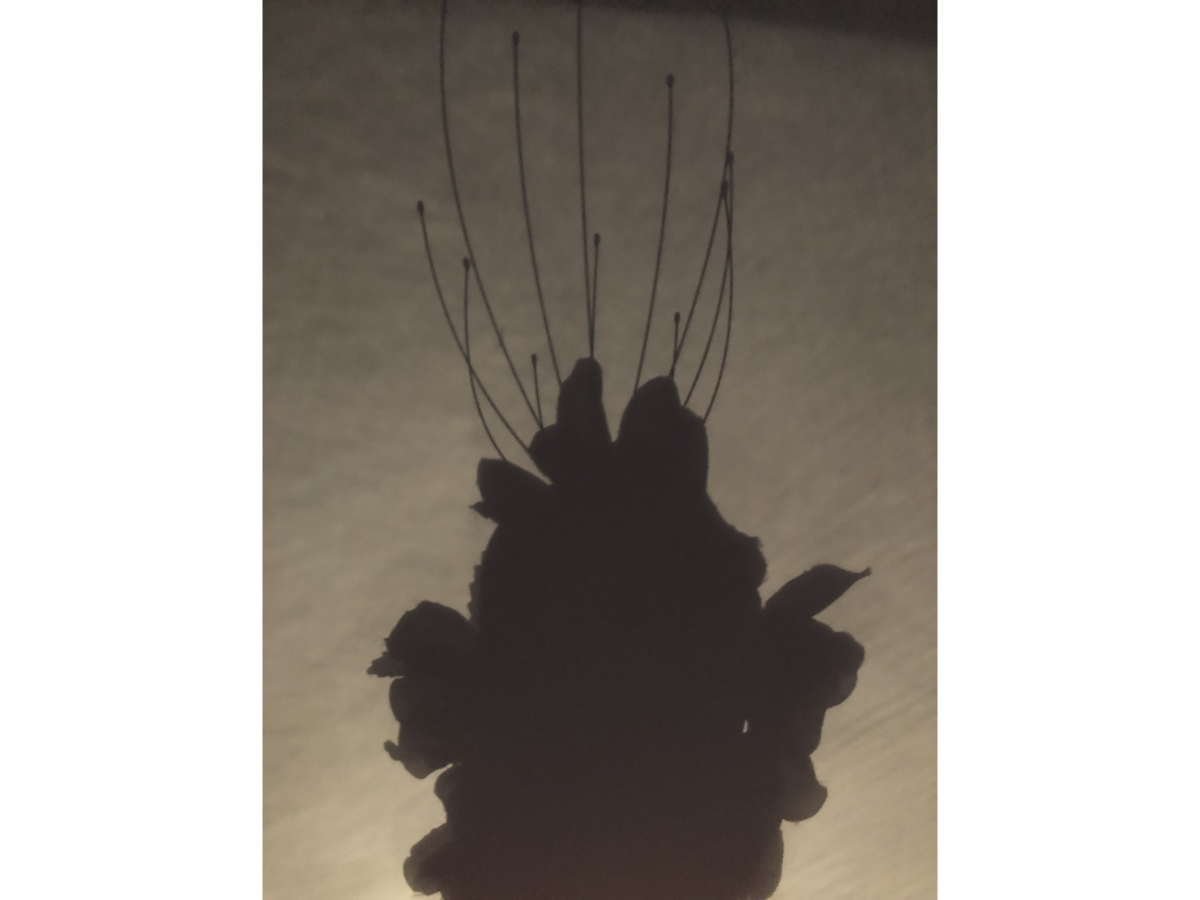Activity
Space Sculpture Inspired by Afruz Amighi’s My House, My Tomb
Resembling a pair of delicate chandeliers dangling from the ceiling, Afruz Amighi’s My House, My Tomb is a sculptural diptych (or two-part artwork) made from industrial materials, including chains and fiberglass, but the primary medium is light. Strikingly illuminated, the hanging sculpture casts dramatic shadows on the surrounding walls and columns of the Asian Art Museum’s loggia, transforming the space so that it is part of the artwork.
In this activity, you will create your own “space sculpture” out of found objects, light, and shadow.
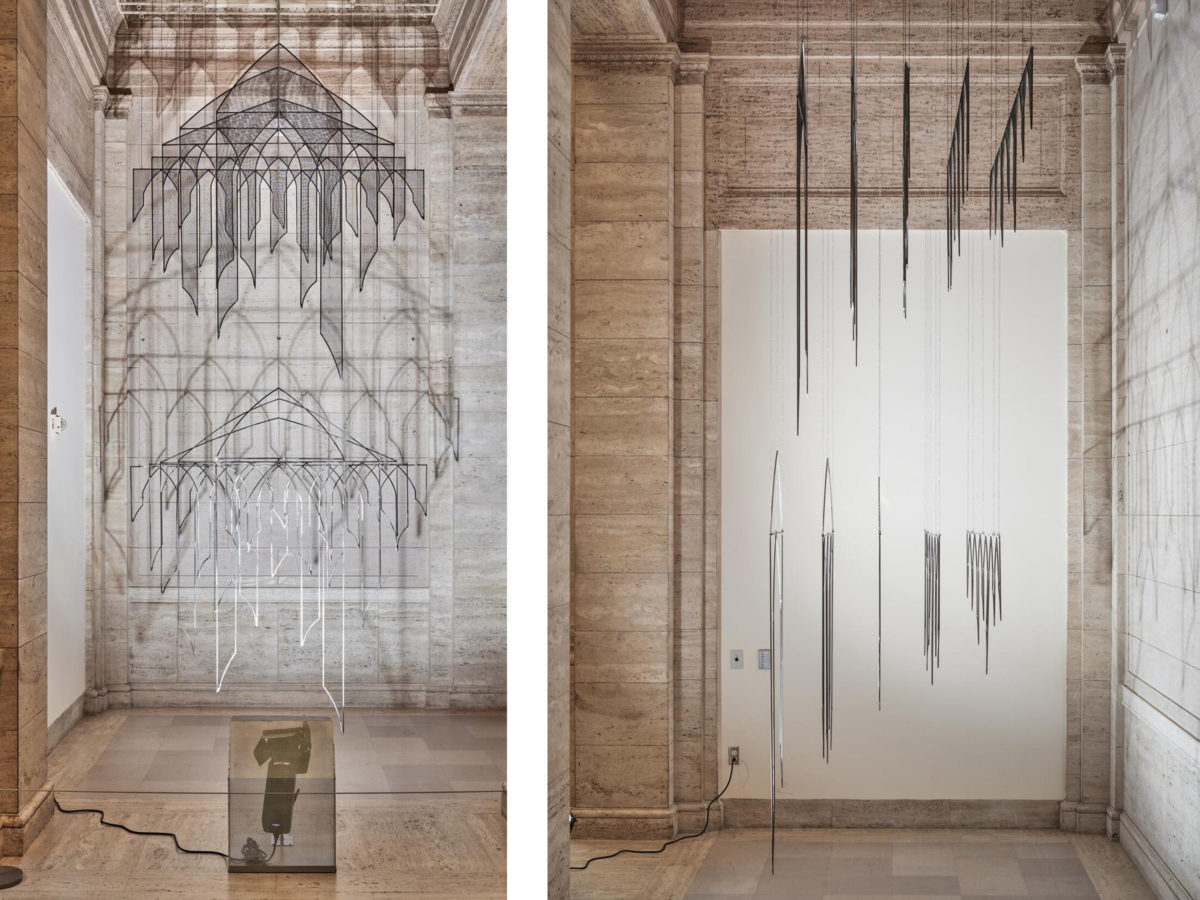
Click through the gallery to see sample sculptures and shadows.
Objectives
- Understand how Amighi uses light as a medium in her work
- Explore how light, shadow, and architecture visually interact
Materials
- Video: “Afruz Amighi: My House, My Tomb”
- Excerpts from Afruz Amighi interview (pdf in sidebar above)
- Found objects in classroom or home
- Tape and/or glue
- Flat backdrop for casting shadows
- Light source (flashlight, lamp, sunlight, etc.)
Procedure
Pre-Activity Discussion
1. Watch the video of the artist explaining the core themes and materials in her work. Pay specific attention to the last minute of the video when she discusses how she uses light in her art. Note also the parts of the video that show Amighi moving around My House, My Tomb and how her own shadow interacts with the artwork.
2. Read the excerpts of Amighi discussing her interest in light and shadow.
3. With a partner or in small groups, discuss the video and excerpts using these guiding questions:
a. What do you think Amighi means when she says shadows “shift, like narratives”? How or when do stories “shift” for a reader or listener? Why would she want a viewer to see such shifts in her artwork?
b. How does experiencing My House, My Tomb shift our understanding of the story about the building of the Taj Mahal?
c. Imagine My House, My Tomb was hung against a background with no light or shadow. How do you think it would change the experience of looking at the work (if at all)?
Art Activity
1. Select found objects (in your classroom or home) that you can tape together, stack, or use to create interesting shapes.
2. Working by yourself or in a small group, build shapes and designs using your found objects. Consider the following ideas as you “sculpt”:
a. Include negative space (holes, gaps, etc.)
b. Build horizontally or vertically
c. Mix opaque objects with see-through objects (for instance, clear plastic bottles or delicate scarves)
d. Create scenes (characters, landscapes, etc.)
3. Set up a flat background behind your sculpture, such as a wall or a piece of cardboard.
4. Set up light sources in front of your creation, such as a propped-up flashlight or lamp, or simply place the sculpture near a window
5. Turn off the lights and observe the shadow(s) the sculpture makes.
6. Experiment with the following modifications and consider the changes in the shadow(s):
a. Move the light source to the left and right, up and down.
b. Move the sculpture, changing its orientation or composition. c. Add or take away elements of the sculpture.
7. Play with your sculpture until you have the most interesting shadow(s) you can find.
Questions for Reflection
1. When you first turned off the lights, did your sculpture make the shadow(s) you expected? Did you find it easy to control how your shadow(s) looked throughout the activity?
2. Think about your sculpture before and after creating the shadow(s). How, if at all, did the shadow(s) change your experience looking at
a. the sculpture,
b. the objects it’s made of, or
c. the space around it?
3. What kind of changes did you make to your sculpture? Which changes made a more interesting shadow(s)?
4. Amighi believes that light and shadow make her sculptures more experiential and exciting. After experimenting with your sculpture, do you agree with this? Why or why not?
5. How might doing this art activity change how you look at light and shadow in everyday life?

